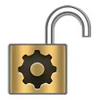Mount partitions formatted with the ext2/3/4 and HFS+/HFSX file systems, so you can trade files with Unix users
Mount partitions formatted with the ext2/3/4 and HFS+/HFSX file systems, so you can trade files with Unix users
Vote: (7 votes)
Program license: Free
Developer: Diskinternals
Version: 4.14
Works under: Windows
Vote:
Program license
(7 votes)
Free
Developer
Version
Diskinternals
4.14
Works under:
Windows
Pros
- User-friendly interface mirroring Windows Explorer
- Supports Ext2, Ext3, and Ext4 Linux partitions
- Multiple filesystems support for data recovery
- Preview capability for image files
- Safeguards against Linux filesystem corruption
Cons
- Read-only access without the ability to edit or save
- May not support all Linux filesystems beyond Ext4
Seamless Access to Linux Partitions from Windows
DiskInternals Linux Reader is a practical software solution for Windows users who need to access filesystems of Linux distributions. This efficient tool is designed to provide read-only access to Ext2, Ext3, and Ext4 partitions, enabling the viewing of files and folders from a Linux partition directly within the Windows environment.
Intuitive User Interface
The user interface of DiskInternals Linux Reader will be familiar to many, as it bears a striking resemblance to the traditional Windows File Explorer. Users can navigate through their Linux file system with ease, making file identification and access straightforward and hassle-free. This accessibility is especially beneficial for those who might not be accustomed to Linux's native file management systems but need quick access to its partitions from a dual-booting setup or through connected storage media.
Built-In Utilities and Compatibility
DiskInternals Linux Reader goes beyond simple file browsing, featuring a suite of embedded utilities. These tools enable users to retrieve data not only from Linux partitions but also from other storage systems including FAT, NTFS, flash disks, and optical media. This multi-faceted capability makes it an essential utility for data recovery and system administration tasks.
Despite its compatibility with a variety of file systems, DiskInternals Linux Reader excels in its processing of images within Linux partitions. The program offers users a preview function for pictures, paralleling what one might expect from native Windows photo viewing applications, thus providing a seamless crossover in user experience between operating systems.
Security is also a non-issue with this software. DiskInternals Linux Reader is engineered to bypass any security protocols set up within the Linux environment, ensuring that users can access their files unimpeded.
Read-Only Safeguard
An important feature of DiskInternals Linux Reader is its read-only nature when accessing Linux filesystems. Although this means users cannot edit or save new documents to the Linux partition from Windows, it serves as a safeguard against potential file corruption. Editing files on a partition outside its native operating system can lead to data integrity issues. DiskInternals Linux Reader mitigates this risk, ensuring that when the Linux OS is booted, the filesystem remains untainted.
Recovery and Dual-Use Flexibility
For those that frequently toggle between Windows and Linux operating systems or are in search of lost and deleted files within Linux partitions, DiskInternals Linux Reader provides a critical tool. Its ability to provide clear visibility and access to Linux filesystems from within Windows turns a complex task into a manageable one without the need for extensive technical knowledge.
In conclusion, DiskInternals Linux Reader stands as an invaluable utility for dual-operating system users and those in need of accessing or recovering Linux-based files from Windows. The software’s strength lies in its simplicity, compatibility, and safety features, which together form a robust bridge between the two operating systems.
Pros
- User-friendly interface mirroring Windows Explorer
- Supports Ext2, Ext3, and Ext4 Linux partitions
- Multiple filesystems support for data recovery
- Preview capability for image files
- Safeguards against Linux filesystem corruption
Cons
- Read-only access without the ability to edit or save
- May not support all Linux filesystems beyond Ext4


